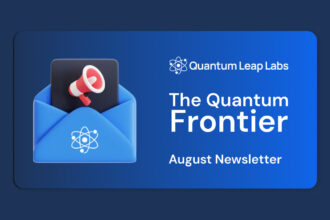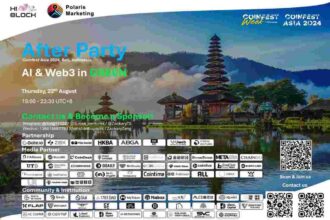Within the mercurial world of cryptocurrency, stability is nearly an oxymoron. Yet, when the Terra/LUNA stablecoin collapsed in 2022, rattling the global crypto markets, Paolo Ardoino, then CTO of Tether, was front and center, calm as if he had weathered a thousand storms.
With a remarkable resilience that has since defined him, Ardoino stood at the helm of Tether and processed a staggering $7 billion in withdrawals within 48 hours, and $20 billion in the following weeks—around a quarter of Tether’s total holdings at the time.
“It was quite an interesting moment,” he reflected later, the memory curiously charged with fondness, “It forced us to prove to the world that we actually were solid.”
For Ardoino, challenge has never been a roadblock, but rather an initiation.
From Genoa to the World
Paolo Ardoino’s story began in the serene, cobbled streets of Genoa, a small town nestled in Italy’s north, far from the buzz of the digital realm he now commands. Born with a curiosity that bordered on obsession, Ardoino fondly remembers the thrill of his first computer, an Olivetti 386.
By his own account, the machine was hardly sophisticated—MS-DOS, 4MB of RAM, floppy disks. But it sparked something unquenchable. In a world where most saw computers as luxuries or, as one math teacher dismissed them, “a waste of time,” Ardoino saw potential.
And so, a young Paolo, miles from the typical resources of a tech prodigy, taught himself to code, creating his own games from scratch. His heroes? Linus Torvalds, Richard Stallman, Eric Raymond—the minds behind open-source software. He devoured The Cathedral and the Bazaar and dreamed of decentralized, resilient systems where, as he says, “everyone wins.”
The Spark of Purpose
Ardoino’s journey from a small Italian town to Tether’s frontlines was not preordained. By his university years, he’d found his way into research groups dedicated to parallel computing and peer-to-peer networks.
His early career, however, was shaped not in crypto but in finance. Armed with a degree in computer science and a relentless drive, he took his first job designing trading systems for a hedge fund in 2011. By 2013, he had struck out on his own, founding Fincluster, a startup in London that developed trading software for hedge funds.
Yet, for all its promise, traditional finance proved unfulfilling, and in 2014, Ardoino’s path would cross with Giancarlo Devasini, then the helm of Bitfinex.
What began as a senior software developer position quickly evolved, and within a year, he was CTO. The work, the culture, and the mission aligned perfectly: it was high-speed, cutting-edge, and irreversibly impactful.
A Vision Beyond Profit
Today, Ardoino is more than a tech savant or crypto executive—he is an architect of a new economic landscape. Known as the hardest-working man in crypto, his GitHub contributions alone hint at his intensity, with over 3,000 code contributions per year. As the newly-minted CEO of Tether, his work extends far beyond stablecoins.
He speaks of Tether not only as a financial product but as a lifeline for billions globally who lack access to stable financial systems. “There are five billion people around the world that live in high inflation countries; three billion of them don’t have a bank account…not because they are bad people,” he stated plainly, “but because they are too poor to be of interest to a bank.”
This ethos fuels Ardoino’s fervor for emerging markets. He dismisses the notion that Tether’s success lies with affluent countries. “If you create the US dollar and… try to sell it in the U.S., it’s a little bit like selling ice to an Eskimo,” he quipped.
Instead, Ardoino champions financial access for those cut off from traditional banking. To him, Tether isn’t just money; it’s the promise of self-determination.
The All-Seeing Strategist
Under his leadership, Tether’s trajectory has shifted toward innovation in the infrastructure powering blockchain. From bitcoin mining operations powered by hydropower in Uruguay to the creation of Moria, a futuristic network designed to coordinate everything from miners to sensors in real-time, Ardoino’s vision is layered.
Moria, he says, is a nod to Lord of the Rings, a personal favorite. With data flowing from thousands of temperature, oil, and wind sensors, it’s blockchain meets the Internet of Things, set to bring the decentralized world closer to energy independence.
And it doesn’t stop there.
Ardoino is already laying foundations for Tether’s foray into artificial intelligence. In a move that took the industry by surprise, Tether recently invested in Northern Data, to establish the infrastructure Europe’s industry giants increasingly demand.
While there’s speculation on how deep this partnership will go, Ardoino, a self-proclaimed fan of Asimov’s dystopian cautionary tales, knows exactly what’s at stake. “AI has the potential to create the biggest social unrest humanity has faced since the Industrial Revolution,” he warned. Yet, he remains undeterred, even protective of his team.
“We won’t fire people just because AI made the job more efficient…finance is not the only thing that matters.”
Through the Fire
In a world where trust is often the first casualty, Tether’s reputation has endured rigorous tests. Regulatory scrutiny, accusations of opaque practices, a history peppered with controversial banking relationships—from Wells Fargo to the Bahamas-based Deltec—Tether has never been a stranger to the spotlight. Ardoino takes these trials in stride, almost with pride. He recalls a brief but grueling standoff with Fir Tree Capital, the hedge fund that bet Tether would collapse alongside Terra.
As waves of FUD (fear, uncertainty, and doubt) churned around Tether, Ardoino kept faith in the company’s fundamentals. By his estimation, Tether’s resilience was inevitable, not coincidental.
With Tether now boasting a market cap nearing $90 billion, its reserves, a medley of U.S. Treasuries and bitcoin, have propelled it to unprecedented profitability—over $1 billion in net profit each quarter in 2023 alone.
“We have over $100 billion in U.S. Treasury bills,” he asserted. “If we were a country… we’d hold more U.S. Treasuries than the UAE… than Australia. We’re very, very close to Germany. How crazy is that?”
It is this paradox—a private company as stable as a nation-state—that fuels both awe and ire from regulators worldwide.
Read this article by DroomDroom that lists the top 8 wallets for securely storing Tether (USDT)
Legacy of a Tireless Pioneer
It’s easy to frame Ardoino as the workaholic visionary, a reputation he owns unapologetically. But ask him what lies beyond the constant grind, and he turns contemplative. “I’ve never been to Japan,” he muses. Japan—the birthplace of gaming consoles and legendary traditions, the culture he has yet to explore.
For all the cities he has yet to see, the holidays he’s skipped, Ardoino’s zeal remains steadfast. “I wake up happy, even through challenging times. I feel blessed for the opportunity that I have.”
Today, as the torchbearer of Tether and one of the most significant figures in crypto, Paolo Ardoino is still building—still restless, still driven.
He is creating technology not for comfort, but for a world on the brink of financial evolution, a place where technology and trust could finally speak the same language.



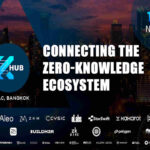






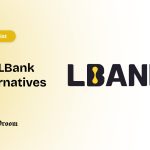



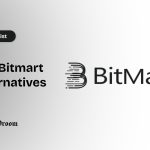
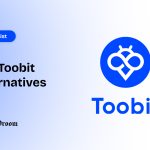
![Bitcoin Amsterdam Promo Code: DROOMDROOM [Top Deal] 25 Promo Code for Bitcoin Amsterdam](https://droomdroom.com/wp-content/uploads/2025/07/Bitcoin-Amsterdam-M-330x220.jpg)
